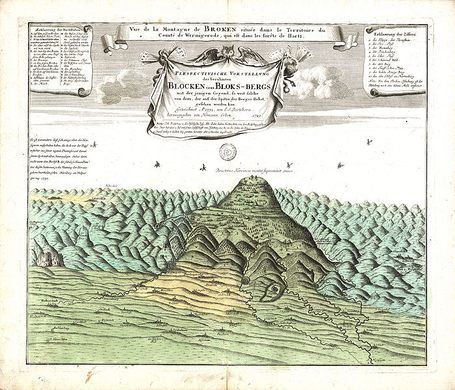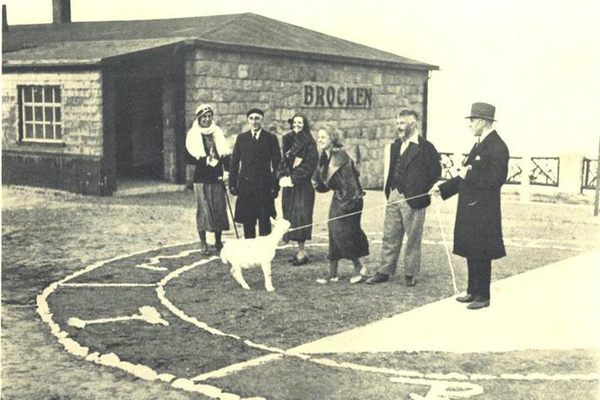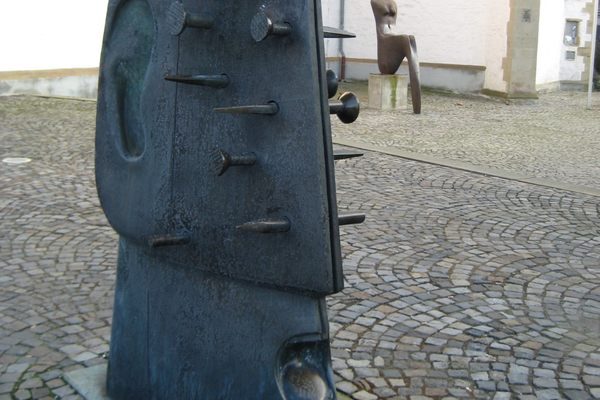Teufelskanzel & Hexenaltar
Goethe's "Faust" was inspired by these rock formations known as the "Devil's Pulpit" and "Witches' Altar."
Topping a mountain long associated with demonic deals and witchy gatherings are two distinctive rock formations, known respectively as Teufelskanzel and Hexenaltar, or “Devil’s Pulpit” and “Witches’ Altar”.
In German myth and lore, Brocken Mountain has long been home to gatherings of witches and encounters with the devil - and not all of the spooky atmosphere is just in stories. For generations hikers have been startled by the spooky Brocken Spectre illusion, in which an enormous ghostly apparition appears to be floating in a halo of light.
The two granite formations are thought to have inspired Goethe’s setting for Faust on the Brocken, in which the scholarly Faust trades his eternal soul for the worldly assistance of Mephistopholes.
To this day, the Brocken hosts the annual Walpurgisnacht celebrations at the end of April, loosely associated with the tradition of the annual witches’ celebration, purportedly celebrated on the mountaintop.
Now part of Brocken National Park - the first National Park in Germany - the area remains a wilderness and nearly uninhabited, despite having been a popular hiking destination for centuries.

















Follow us on Twitter to get the latest on the world's hidden wonders.
Like us on Facebook to get the latest on the world's hidden wonders.
Follow us on Twitter Like us on Facebook